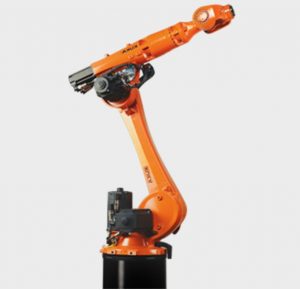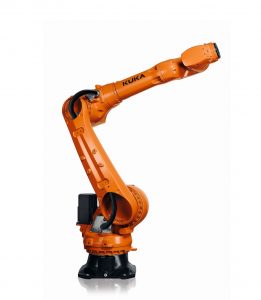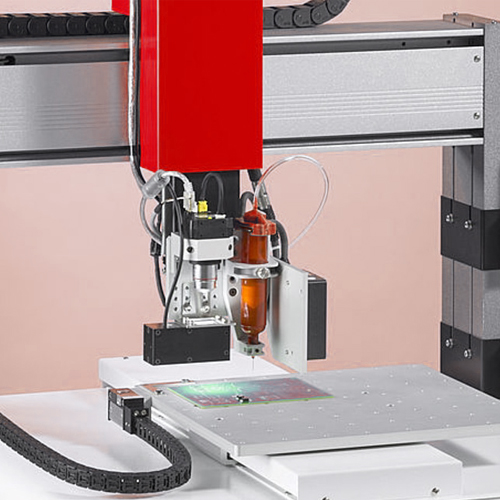All about dispensing, sealing, potting, and coating adhesive with an arm robot
Arm Robot (or called robotic arm) is a typical industrial robot arm that includes a series of joints, articulations, and manipulators that work together to closely resemble the motion and functionality of a human arm (at least from a purely mechanical perspective). A programmable robotic arm can be a complete machine in and of itself, or it can function as an individual robot part of a larger and more complex piece of equipment.
Robotic arms can be used for all manner of industrial production, processing, and manufacturing roles – any task in which extremely precise, fast, and repeatable movement are required, in fact.
Compared to Desktop Dispensing Robot, our standard arm robot is a 6-axis robot with a maximum payload of 35 lbs. and a reach of 5′. This highly complex robot is used for applications where challenging robot programming is needed for specialized motion paths or interaction vision systems.
Our arm robot product line
 |
 |
 |
Benefits for Gluing Tasks
Robotic arms of all kinds are used today at every scale of manufacturing, from minutely detailed circuit board assembly to large-volume heavy industries such as automotive production lines, as well as in a huge range of ‘pick and place’ (conveyor belt) applications.
Basically, in adhesive-relevant applications, 3-6 kg load arm robots are popularly used. Although the variety of arm robotic brings manufacturers with different choice, it is important to know which types are better suited to which tasks to optimize the cost. Before purchasing, it is better to take into consideration the following requirements:
Considerations when choosing an arm robot
Load
All types of robotic arms have a given load capacity, and this manufacturer-specified number always needs to exceed the total weight of the payload involved in any job you expect the arm to perform (including tools and attachments).
Different sorts of robot arms are supported by differently designed frameworks, which can increase or decrease overall load capacity – this must be balanced with consideration of physical placement and footprint.
Orientation
This criterion is generally defined by the footprint and mounting position of the robotic arm, and how well it fits alongside the other equipment in your production line for the range of movements and manipulations it’s expected to perform. This will in turn influence where the arm can physically be positioned relative to the objects it will be moving.
Certain types of robotic arms require bulkier pedestals or more physical clearance space to perform their programmed range of movements, and these factors must be considered in terms of other equipment or workers in the vicinity.
Speed
Particularly when choosing robotic arms for picking and placement applications, it’s important to pay attention to manufacturer ratings for speed, and especially in terms of acceleration over longer distances.
Changes and upgrades to speed ratings can be achieved in some types of robotic arms through changes made to the choice of belts, motors, or actuators used.
Precision
Certain types of programmable robotic arms are inherently designed to be more precise in their range of movements and articulations than others. This may come at a higher cost for a more complex machine and involve a compromise against other factors such as footprint, speed, potential travel distance, and orientation.
For many industrial applications such as picking and placement, robotic arms capable of extremely precise repeatable movement may be an unnecessary expense. However, for tooling applications, precision will be a key consideration before most other factors. Again, changes and upgrades can be made to improve precision for certain types of robotic arms, but not all.
The below criteria are the main ones. To make the right decision for an automatic system, there are more and more factors that must be considered. Contact us for more information.
Hotline: (+84) 984 695 398
Email: gluexpert@prostech.ph



